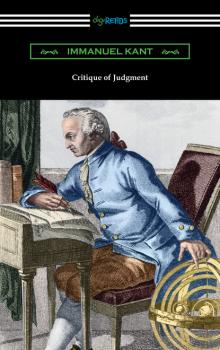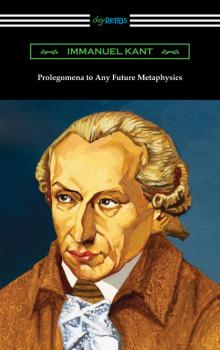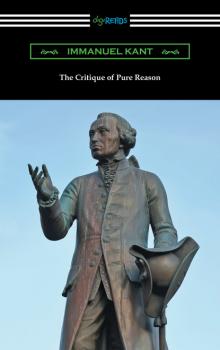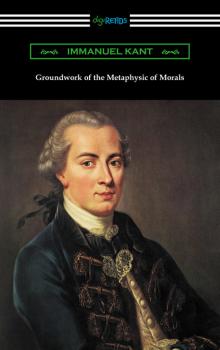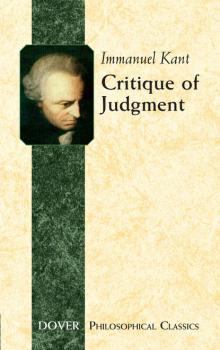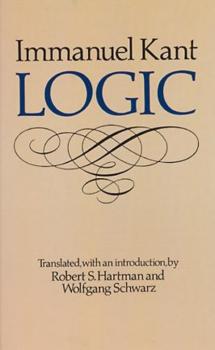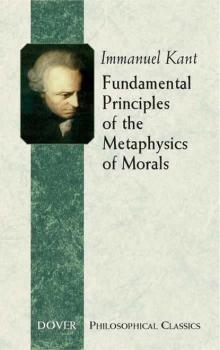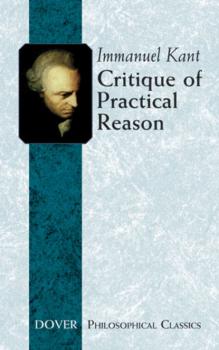ТОП просматриваемых книг сайта:















Immanuel Kant
Список книг автора Immanuel KantАннотация
"The Critique of Practical Reason" is considered by many to be one of the most important works on the subject of moral philosophy ever written. In this work Immanuel Kant puts forth his philosophy of the categorical imperative, a rule for behavior that applies universally. Kant argues that a categorical imperative must guide whatever maxim one establishes for dealing with all decisions with moral implications. «The Critique of Practical Reason» is an excellent work on the philosophy of morality and a seminal work by one of the greatest philosophers of all time, Immanuel Kant.
Аннотация
German philosopher and influential 18th century late Enlightenment thinker Immanuel Kant wrote “Critique of Judgment” in 1790 to solidify his ideas on aesthetics. Often referred to as the “third critique”, it follows Kant’s “Critique of Pure Reason,” published in 1781, and “Critique of Practical Reason”, published in 1788 and completes his “Critical” project. Divided into two sections, one on aesthetic judgment and the other on teleological judgment, “Critique of Judgment” proceeds to analyze the human experience of the beautiful and the sublime. Kant explores a myriad of factors that determine aesthetics: from the effect of art and nature, to the role that human imagination plays, from the objectivity of taste, to the limits of representation. He continues with the connection of aesthetic with morality, disinterestedness, and originality. In the second section, he explores teleological judgments, or judging things according to their ends, and posits that man is the ultimate end, and all forms of nature and beauty exist for the purpose of their connection to mankind. Kant had a profound impact on the artists, authors, and other philosophers of both the classical and romantic periods, establishing in his final “Critique” a milestone in critical theory and philosophy. This edition includes a biographical afterword.
Аннотация
In 1781, Immanuel Kant published his first and most famous work, the “Critique of Pure Reason”. To the German philosopher’s dismay, the work was at first poorly received and largely misunderstood by his readers. As a result, two years later Kant produced his “Prolegomena to any Future Metaphysics that will be Able to Present Itself as a Science” to serve as an introduction to the “Critique”. He restated the main ideas of his philosophy in what Schopenhauer, in 1819, declared was “the finest and most comprehensible of Kant’s principal works, which is far too little read, for it immensely facilitates the study of his philosophy.” Immanuel Kant is considered to be one of the most important and influential figures in Western philosophy for his work in the areas of metaphysics, anthropology, theoretical physics, logic, and moral philosophy. Remarkably, Kant never left the town of Königsberg, Germany, where he had been born, received schooling, and served as lecturer at the University for many years. Presented here is the translation of Paul Carus. This edition includes a biographical afterword.
Аннотация
The 18th century German philosopher Immanuel Kant is widely considered as one the most important figures in modern philosophy. His fundamental arguments with regard to the fields of metaphysics, epistemology, ethics, political philosophy, and aesthetics, have been highly influential and form the basis for much of contemporary thought upon the subjects with which he was concerned. Kant believed that there were fundamental concepts that structured human experience, and that reason principally should guide one’s examination of these concepts. Considered one of Kant’s most important works, “The Critique of Pure Reason” is an exposition on humanity’s faculty for reason in general. First published in 1781, this work builds upon the works of Kant’s philosophical predecessors, notably the work of empiricists like John Locke and David Hume and of rationalists like Gottfried Wilhelm Leibniz. Among the principal contributions to philosophy forwarded in this work is the idea that knowledge is both a product of experience, or “a posteriori” and independent of it, or “a priori”. Additionally Kant argues that judgments may be “analytical”, that they are contained within their own premise, or “synthetic”, that they contribute something external to themselves. An enduringly influential work, “The Critique of Pure Reason” remains to this day as one of the most important works of Western philosophy. This edition is follows the translation of J. M. D. Meiklejohn and includes a biographical afterword.
Аннотация
The 18th century German philosopher Immanuel Kant is widely considered as one the most important figures in modern philosophy. His fundamental arguments with regard to the fields of metaphysics, epistemology, ethics, political philosophy, and aesthetics, have been highly influential and form the basis for much of contemporary thought upon the subjects with which he was concerned. Kant believed that there were fundamental concepts that structured human experience, and that reason principally should guide one’s examination of these concepts. “Groundwork for the Metaphysic of Morals” is his classic exposition of moral philosophy. In this work Kant examines the core concepts of moral theory in an effort to lay bare the fundamental principles of morality. This highly influential work of philosophy is groundbreaking in its argument that righteousness is a function of the character of the principles upon which people act. Kant’s ideas on morality are intriguing and exemplary of his deft at philosophical thought. “Groundwork for the Metaphysic of Morals” is a must read for all seeking a better understanding of the world and humanity’s place in it, through philosophical inquiry.
Аннотация
In his monumental Critique of Pure Reason, German philosopher Immanuel Kant (1724–1804) argues that human knowledge is limited by the capacity for perception. He attempts a logical designation of two varieties of knowledge: a posteriori, the knowledge acquired through experience; and a priori, knowledge not derived through experience. Kant maintains that the most practical forms of human knowledge employ the a priori judgments that are possible only when the mind determines the conditions of its own experience. This accurate translation by J. M. Meiklejohn offers a simple and direct rendering of Kant's work that is suitable for readers at all levels.
Аннотация
This 1790 polemic by one of philosophy's most important and influential figures attempts to establish the principles that support the faculty of judgment. Kant's third critique — after Critique of Practical Reason and Critique of Pure Reason — remains one of the most important works on human reason. The Critique of Judgment informs the very basis of modern aesthetics by establishing the almost universally accepted framework for debate of aesthetic issues.As in his previous critiques, Kant seeks to establish a priori principles. The first part of this work addresses aesthetic sensibility. The human response to specific natural phenomena as beautiful, he asserts, is a recognition of nature's harmonious order that corresponds to a mental need for order. The critique's second half focuses on the apparent teleology in nature's design of organisms. The philosopher declares that the mind is predisposed to find purpose and order in nature, and this predisposition forms the main principle underlying all our judgments. Although this could be interpreted as an argument in favor of a creator, Kant insists that a supernatural dimension or the existence of God cannot be proven — such considerations lie beyond the realm of reason, solely within the province of faith.
Аннотация
The second, corrected edition of the first and only complete English translation of Kant's highly influential introduction to philosophy, presenting both the terminological and structural basis for his philosophical system, and offering an invaluable key to his main works, particularly the three Critiques. Extensive editiorial apparatus.
Аннотация
What is morally permissible, and what is morally obligatory? These questions form the core of a vast amount of philosophical reasoning. In his Fundamental Principles of the Metaphysics of Morals, Immanuel Kant developed a basis for the answers.In this landmark work, the German philosopher asks what sort of maxim might function as a guide to appropriate action under a given set of circumstances. By universalizing such a maxim, would morally permissible behavior not become clear? Suppose that everyone were to behave in accordance with this maxim. If everyone followed the maxim in the same way without harm to civilized culture, then the behavior would be morally permissible. But what if no one followed the maxim? Would civilization thereby be at risk? In such a case, the behavior would be morally obligatory.Kant's test, known as the Categorical Imperative, is a logical proof of the Golden Rule and the centerpiece of this work. It constitutes his best-known contribution to ethical discussion, and a familiarity with his reasoning in this book is essential to students of philosophy, religion, and history.
Аннотация
The second of Kant's three critiques, <I>Critique of Practical Reason</I> forms the center of Kantian philosophy; published in 1788, it is bookended by his <I>Critique of Pure Reason</I> and <I>Critique of Judgement</I>. With this work Kant establishes his role as a vindicator of the truth of Christianity; he approaches his proof by presenting positive affirmation of the immortality of the soul and the existence of God. The philosopher offers an argument concerning the <I>summum bonum</I> of life: people should not simply search after happiness, but follow the moral law and seek to become worthy of the happiness that God can bestow.<BR>This <I>Critique</I> comprises three sections: the Analytic, the Dialectic, and the Doctrine of Method. The Analytic defines the ultimate moral principle, the categorical imperative, and argues that to obey it is to exercise a freedom. The Dialectic make the assumption that immortality and God exist, arguing that pure practical reason falls into error when it expects perfection in this world; we should anticipate finding perfection in the next world, with God's help. The final section, the Doctrine of Method, offers suggestions in educating people in the use of pure practical reason.<BR>A seminal text in the history of moral philosophy, this volume offers the most complete statement of Kant's theory of free will and a full development of his practical metaphysics.


